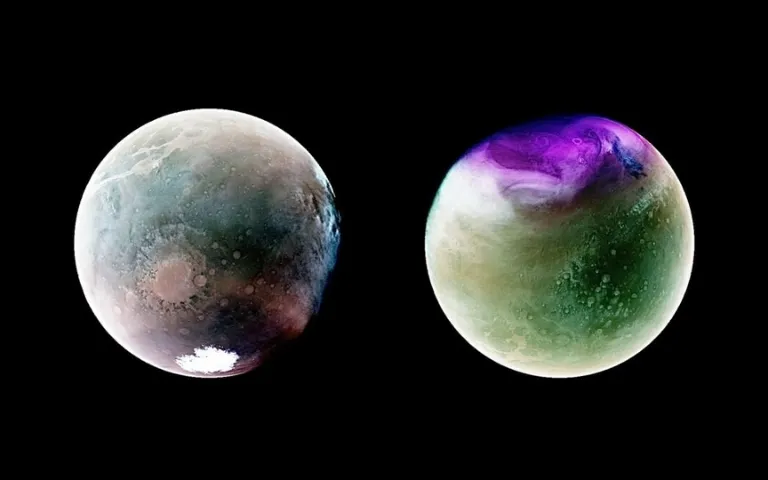Stunning Ultraviolet Images of Mars Taken by NASA MAVEN
According to Devdiscourse, NASA’s MAVEN has unveiled breathtaking ultraviolet images of Mars captured from various positions during its orbit around the Sun. These images, taken at ultraviolet wavelengths, will aid scientists in studying atmospheric dynamics and scrutinizing surface features with greater precision.
Using MAVEN’s Imaging Ultraviolet Spectrograph (IUVS), scientists were able to take clear images of Mars in two different seasons, 2022 and 2023. To make ultraviolet wavelengths visible to the human eye, a color scheme is used in which the distinct brightness levels of the three ultraviolet wavelength ranges are converted into vibrant shades of red, green, and blue.
Not only does it help us understand different wavelengths, it also helps scientists distinguish between atmospheric components and surface features, such as atmospheric ozone, which appears purple, while clouds and fog are white or blue.
There are two images released from different time zones and locations, so the difference can be interpreted. The first image was taken in July 2022, during the summer season in the southern hemisphere of Mars. Pictured are Argyre Basin and Valles Marineris. Argyre Basin is one of the deepest craters on Mars and is filled with a delicate pink atmospheric haze. Instead, the breathtaking Valles Marineris, a complex network of canyons that commands attention, dominates the upper left of the image.
However, according to Devdiscourse, the Antarctic ice sheet is gradually shrinking due to summer. This research helped MAVEN find a larger loss of hydrogen from Mars.
When Mars reached its furthest distance from the Sun in January 2023, another photo was taken to view the planet’s northern hemisphere. Valles Marineris canyons can be seen as tan in the lower left and ozone magenta in winter.
Since 2013 and 2014, MAVEN has successfully given scientists a new perspective to dwell deeper into Mars’ upper atmosphere, ionosphere, and the complex interactions between the planet and the Sun’s solar wind.




